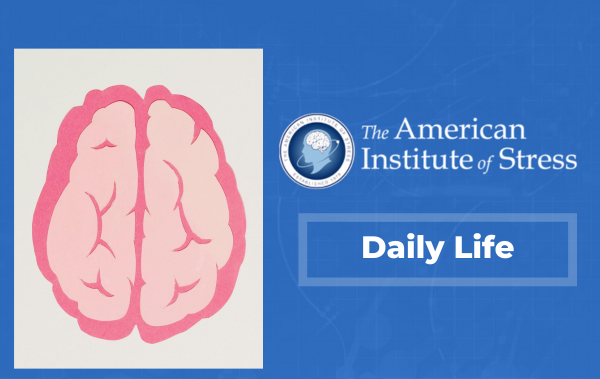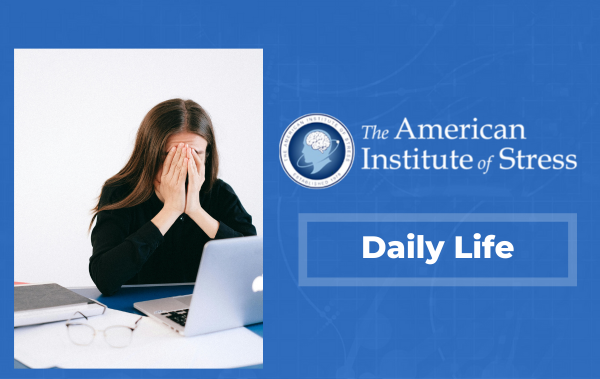 They’re not all the same, but we do have tips to help you deal with all of them.
They’re not all the same, but we do have tips to help you deal with all of them.
You probably experience worry, stress or anxiety at least once on any given day. Nearly 40 million people in the U.S. suffer from an anxiety disorder, according to the Anxiety and Depression Association of America. Three out of four Americans reported feeling stressed in the last month, a 2017 study found. But in one of these moments, if asked which you were experiencing — worry, stress or anxiety — would you know the difference?
I reached out to two experts to help us identify — and cope with — all three.
What is worry?
Worry is what happens when your mind dwells on negative thoughts, uncertain outcomes or things that could go wrong. “Worry tends to be repetitive, obsessive thoughts,” said Melanie Greenberg, a clinical psychologist in Mill Valley, Calif., and the author of “The Stress-Proof Brain” (2017). “It’s the cognitive component of anxiety.” Simply put, worry happens only in your mind, not in your body.
How does worry work?
Worry actually has an important function in our lives, according to Luana Marques, an associate professor of psychiatry at Harvard Medical School and the president of the Anxiety and Depression Association of America. When we think about an uncertain or unpleasant situation — such as being unable to pay the rent or doing badly on an exam — our brains become stimulated. When we worry, it calms our brains down. Worry is also likely to cause us to problem-solve or take action, both of which are positive things. “Worry is a way for your brain to handle problems in order to keep you safe,” Dr. Marques explained. “It’s only when we get stuck thinking about a problem that worry stops being functional.”
Three things to help your worries:
-
Give yourself a worry “budget,” an amount of time in which you allow yourself to worry about a problem. When that time is up (start with 20 minutes), consciously redirect your thoughts.
-
When you notice that you’re worried about something, push yourself to come up with a next step or to take action.
-
Write your worries down. Research has shown that just eight to 10 minutes of writing can help calm obsessive thoughts.
Remember: Worry is helpful only if it leads to change, not if it turns into obsessive thoughts.
What is stress?
Stress is a physiological response connected to an external event. In order for the cycle of stress to begin, there must be a stressor. This is usually some kind of external circumstance, like a work deadline or a scary medical test. “Stress is defined as a reaction to environmental changes or forces that exceed the individual’s resources,” Dr. Greenberg said.
In prehistoric times, stress was a natural response to a threat, like hearing a predator in the bushes. Today, it still prompts a behavioral response, firing up your limbic system and releasing adrenaline and cortisol, which help activate your brain and body to deal with the threat, Dr. Greenberg explained. Symptoms of stress include a rapid heart rate, clammy palms, and shallow breath. Stress might feel good at first, as the adrenaline and cortisol flood your body, Dr. Marques said. You might have experienced the benefits of stress as you raced through traffic to get to an appointment, or pulled together an important assignment in the final hour. That’s called “acute stress,” and the rush wore off when the situation was resolved (i.e. you turned in your assignment).
Chronic stress, on the other hand, is when your body stays in this fight-or-flight mode continuously (usually because the situation doesn’t resolve, as with financial stressors or a challenging boss). Chronic stress is linked to health concerns such as digestive issues, an increased risk of heart disease and a weakening of the immune system.
-
Get exercise. This is a way for your body to recover from the increase of adrenaline and cortisol.
-
Get clear on what you can and can’t control. Then focus your energy on what you can control and accept what you can’t.
-
Don’t compare your stress with anyone else’s stress. Different people respond differently to stressful situations.
Remember: Stress is a biological response that is a normal part of our lives.
What is anxiety?
If stress and worry are the symptoms, anxiety is the culmination. Anxiety has a cognitive element (worry) and physiological response (stress), which means that we experience anxiety in both our mind and our body. “In some ways,” Dr. Marques said, “anxiety is what happens when you’re dealing with a lot of worries and a lot of stress.”
How does anxiety work?
Remember how stress is a natural response to a threat? Well, anxiety is the same thing … except there is no threat.
“Anxiety in some ways is a response to a false alarm,” said Dr. Marques, describing a situation, for example, in which you show up at work and somebody gives you an off look. You start to have all the physiology of a stress response because you’re telling yourself that your boss is upset with you, or that your job might be at risk. The blood is flowing, the adrenaline is pumping, your body is in a state of fight or flight — but there is no predator in the bushes.
Three things to help your anxiety
-
Limit your sugar, alcohol and caffeine intake. Because anxiety is physiological, stimulants may have a significant impact.
-
Check-in with your toes. How do they feel? Wiggle them. This kind of refocusing can calm you and break the anxiety loop.
-
When you’re in the middle of an anxiety episode, talking or thinking about it will not help you. Try to distract yourself with your senses: Listen to music, jump rope for five minutes, or rub a piece of Velcro or velvet.
Remember: Anxiety happens in your mind and your body so trying to think your way out of it won’t help.
Too worried, stressed or anxious to read the whole article?
Here’s the takeaway: Worry happens in your mind, stress happens in your body, and anxiety happens in your mind and your body. In small doses, worry, stress, and anxiety can be positive forces in our lives. But research shows that most of us are too worried, too stressed and too anxious. The good news, according to Dr. Marques, is that there are simple (not easy) first steps to help regulate your symptoms: Get enough sleep; eat regular, nutritious meals; and move your body.





